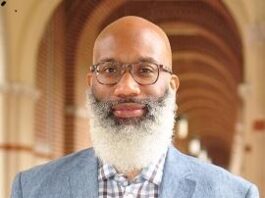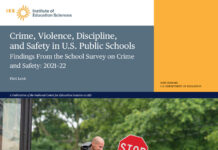Lingering Mistrust From Tuskegee Syphilis Study Connected to COVID-19 Vaccine Reluctance
African Americans who lived within 750 miles of Tuskegee, Alabama, were more reluctant to receive the COVID-19 vaccine than their White neighbors, as well as Black Americans from other United States regions. The authors attribute this finding to lingering mistrust of public health services as a result of the Tuskegee Syphilis Study which ran from the 1930s to 1972.
Study Finds African Americans Own a Significant Portion of Uninsured U.S. Homes
Of the approximately six million uninsured homes in America, 11 percent are owned by African Americans, resulting in roughly $206 billion in uninsured Black-owned property value.
Study Finds Link Between Black Men’s High Rate of Suicide and Early-Childhood Exposure to...
Upon surveying 500 rural Black men over several years, the University of Georgia study found men who reported experiencing racial discrimination as a child had more difficulty developing healthy relationships, and subsequently were more likely to experience suicidal ideation.
Research Finds Black Men Less Likely Than Black Women and White Patients to Receive...
A new study from the Indiana University School of Medicine has found that despite having the highest risk for heart failure, Black men on the heart transplant wait-list are less likely than White men, White women, and Black women to receive a transplant.
Despite Equal Preparedness, Black Students Less Likely Than White Peers to Enroll in AP...
By using a novel statistical measurement of academic-preparedness, researchers from New York University have discovered Black students are less likely to enroll in AP math courses than their White peers who have a similar level of academic-preparedness.
Research Finds African Americans With Strong Social Network Less Likely to Experience Cognitive Decline
A new study from scholars at Case Western Reserve University and the University of California, Irvine has found a friend-focused social network is connected to higher cognitive ability in older Black Americans.
Study Links Historic Racial Discrimination in Property Ownership to Increased Heat Exposure
The authors write, "Extreme heat exposure during heat waves can be life threatening, and here we show that the policies of the past like racial covenants, in addition to redlining, shape whose lives are threatened by dangerous heat and who is protected from this health impact."
Report Finds Strong Aptitude But Low Interest for STEM Careers Among Black Students
Educational technology company, YouScience, in partnership with the nonprofit organization, Black Girls Do STEM, have released a report that found despite Black students showing a strong aptitude for STEM fields, they have little interest in pursuing a career in STEM.
Institute of Education Sciences Releases Report on Rates of Bullying Among American Students
The report found that 19.2 percent of students in 2022 experienced bullying in school. The rate of bullying among Black students was less than the rate of White students at 17 percent and 21.6 percent respectively.
Research Uncovers Link Between Untreated Depression and Cognitive Decline Among African Americans
While the study led by researchers at Mayo Clinic uncovered an association with depression and cognitive decline among all study participants, the rate of cognitive decline was faster in Black people compared to White people.
Study Finds Racist Patterns Among Commonly Used Artificial Intelligence Tools
The research found artificial intelligence language models such as ChatGPT can hold racist views towards speakers of African American Vernacular English, describing speakers of the dialect as less employable and more likely to be criminals.
University of Maryland Reports on Its Historic Ties to Slavery
"This new research report is an important first step in confronting and disrupting the narrative of our shared history. It challenges us to see through the privileged half-truths we’ve long held as a university and to create a more inclusive and truthful documented history," said Lae’l Hughes-Watkins, co-chair of The 1856 Project.
Gallup Survey Finds Black Students More Likely Than Their White Peers to Withdraw From...
A 2023 survey conducted by Gallup in partnership with the Lumina Foundation has found that 40 percent of currently enrolled Black students have considered stopping their coursework in the past six months, compared to 31 percent of White students.
National Urban League Publishes 2024 “State of Black America” Equity Index Report
Six decades after the Civil Rights Act of 1964, the report identifies American sectors where inequality persists, areas of progress, and the actions President Biden has taken to advance racial equality in America.
White People More Likely to Stand Up to Racism on Social Media When Setting...
A new study from the University of Illinois and the University of California, Santa Barbara found that White people were more likely to confront racism on social media if their goal was to set social norms rather than change the author's personal beliefs.
Research Finds Black Entrepreneurs More Likely to Share Ideas with Expert Strangers Than Friends...
New research from Duke University and the University of Utah has found Black people are less likely than White people to share their business ideas with friends, and are more likely to share their ideas with expert strangers.
Report Reveals Half of American Health Care Workers Have Observed Racism Towards Patients
New research has found that 47 percent of healthcare workers in the United States have observed racism against patients, and 52 percent believe racism to be a major problem in the medical field.
Report Established by State Senator Art Haywood Uncovers Racism in the Pennsylvania State System...
"Ultimately, Pennsylvania's leaders and institutions should respect the dignity of all students," says Senator Art Haywood. "The work to ensure that dignity is intact for Pennsylvania's Students of Color continues with this report in hopes that one day the work will no longer be required."
Rate of Black Homeownership in America Remains Virtually Unchanged Since 2012
The National Association of Realtors has found that although homeownership rates in America are steadily increasing, the rate of Black homeownership has experienced significantly less growth than White, Asian, and Hispanic homeownership since 2012.
Study Examines Relationship Between Racism and Gun Ownership in America
The results found White people with racist attitudes are no more likely to own guns than those without racist beliefs. However, the study did find a correlation between racism and opposition to gun control policies.
Pew Research Center Provides Insight into Share of Black-Owned Businesses in the United States
Through analyzing data from the United States Census Bureau and the National Science Foundation, the Pew Research Center found that Black-owned businesses make up 3 percent of companies and earn 1 percent of gross revenue in the United States.
Study Finds Elementary School Teachers More Likely to Discipline Black Boys than White Peers
“It is important to understand how race and racism shape children’s earliest school experiences,” wrote study author, Dr. Calvin Zimmerman. “Even for students as young as 6 years old, schools perpetuate existing social and educational inequalities.”
Remote Work Opportunities Lead to a More Diverse Applicant Pool
Between 2018 and 2022, there was a 15 percent increase in women and a 33 percent increase in underrepresented minority applicants for open STEM positions, suggesting remote work opportunities are more likely to attract diverse candidates than on-site positions.
Academic Fields Where Blacks Earned Few or No Doctoral Degrees in 2022
In 2022, African Americans earned 1.2 percent of all mathematics and statistics doctorates, 1.2 percent of all doctorates in computer science, 1.7 percent of all doctorates in chemistry, and only 1.7 percent of all doctorates awarded in engineering disciplines.
University of Alabama Creates Database Relating to History of Slavery on Campus
Scholars from the University of Alabama created an online database housing information on the history of slavery on the university's campus. The new website is the latest effort in a larger initiative from the Consortium of Universities Studying Slavery to uncover the history of enslaved individuals who labored for colleges and universities across the world.
United Negro College Fund Outlines Best Practices for Teacher Education at HBCUs
Four HBCUs, Huston-Tillotson University, Alabama A&M University, Albany State University, and Fayetteville State University, partnered with the United Negro College Fund to outline their best practices for educating Black teachers.
Study Finds Young Black Women Are Six Times More Likely to Be Murdered Than...
The research team, led by Columbia University postdoctoral research fellow Bernadine Waller, writes, "Our findings suggest that there is an urgent need to address homicide inequities among Black and White women in the USA. Enacting federal legislation that reduces gun access is a crucial step."
The Number of African American Doctorates Reaches an All-Time High
Recent data from the National Science Foundation reveals that 2,647 African Americans earned doctorates from U.S. universities in 2022. This is the highest number ever recorded. African Americans earned 7.5 percent of all doctorates awarded to U.S. citizens or permanent residents of this country.
Study Finds White Teachers Struggle to Discuss Race With Black Coworkers and Students
The University of Illinois Urbana-Champaign has found White public high school teachers feel their personal and professional identities are challenged when having racially-related conversations with Black students and coworkers.
New Study Finds Children of Color in the United States Receive Inferior Health Care
The study compiled data from recent research on children's health care and found many disparities between the quality in care received by children of color compare to White children.
Enrollments Are Up in Higher Education With Black Increases Outpacing Those of Whites
For African Americans, more than 1.6 million students were enrolled as undergraduates in the fall of 2023, up 0.7 percent from the previous year. White enrollments were down by 2 percent from the fall of 2022. Black enrollments in graduate schools also increased, while White enrollments declined.
University Study Uncovers History of Neighborhood Segregation In Kitsap County, Washington
Upon review of historical housing data from thousands of properties throughout Washington State, a team of researchers has complied information regarding racist housing restrictions in place up to the mid-twentieth century.
Study Analyzes Racial Financial Inequality In America By State
A new study from WalletHub has reviewed the racial wealth gaps across the United States by analyzing data for each of the 50 states and the District of Columbia.
The Pew Research Center Offers a Snapshot of the Black American Population
The Black population of the United States has increased by 32 percent since 2000. This group of Black Americans is diverse, with a growing number and share born outside the U.S. and an increasing number saying they are of two or more races.
Crime and Violence in U.S. Public School Systems
There were 8,200 hate crime incidents at public schools. Only 3.5 percent of all public schools reported hate crimes. Some 4.7 percent of all schools reported "racial or ethnic tensions.' Middle school were - by a large margin - the most likely to report such tensions.
New Online Database Exposes the Horrors of the Tuskegee Syphilis Study
The collection consists of more than 3,000 reproduced copies of correspondence, memoranda, meeting minutes, reports, and scientific articles regarding the 40-year U.S Public Health Service Study that withheld treatment from Black men with syphilis so researchers could track the progression of the disease.
















































